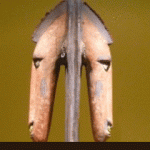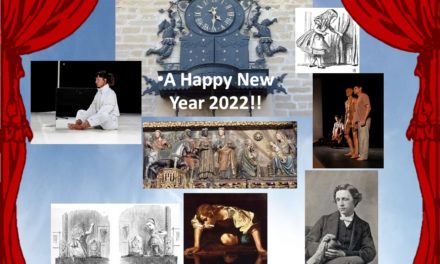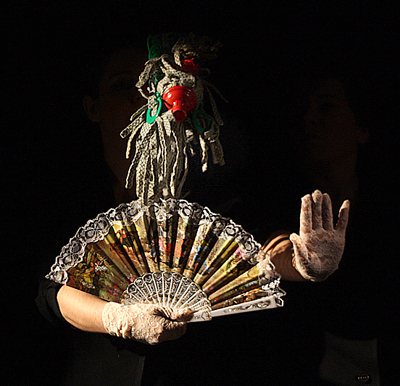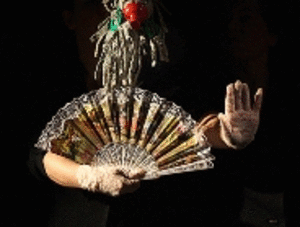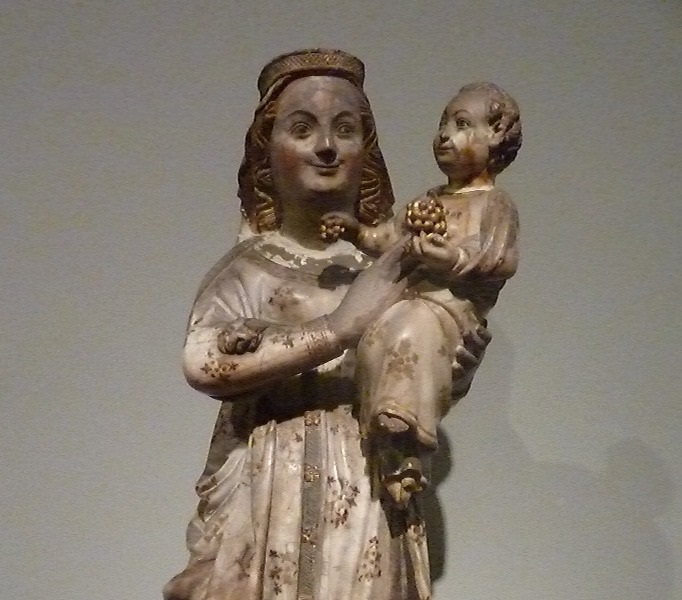I don’t think that we puppeteers are conscious of the responsibility that has fallen to us. This is not a responsibility that comes from any outside obligation or as the result of a comission by others, but rather because of the very nature of our profession, – a profession, incidentally, that can be considered as one of the oldest in the world. The responsiblitity is this: to treat the subjects of duality, of psychological projection, and of our two-fold, or multi-fold, nature[1]. These are old themes in fact, which the reality of today’s world has charged with meaning and turned into urgent imperatives: the practice of duality and exercise of multiplicity is not a caprice or worn-out luxury, but an urgent necessity of our time.
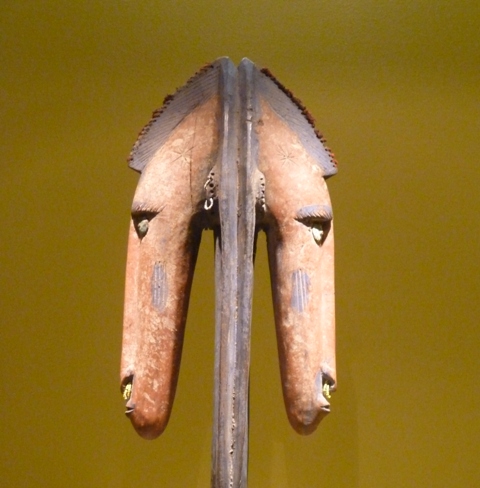
Double African head. Museu da Marioneta de Lisboa.
The only way to break with the current monotheism of Money, which is also a montheism of the Abstract and the Dead, is to split into two so as to learn how to project ourselves onto ourselves, and once more enrich human civilisation with that time-honoured exercise of consciousness: to see and know oneself, as the starting point for opening to the inner world and human culture. It is the act of placing a mirror inside oneself, to see one’s reflection and not run away in fear at the image that presents itself.
To behave once more as fully human: to be open to others through the time-honoured laws of hospitality; to see in “one another” precisely that; which is to say, another who is similar to ourselves, a being whose sovereignty is equal to ours. The culture being imposed on us and which seems to gain ground every day, is a culture of fear and mistrust, isolating us in impermeable and insensitive egocentricity with respect to other beings who surround us, whether of our own, human, or other species. Such insensitivity is based on a reductionism which turns us into limited, unilateral and uniform beings: we are a number for the stastistics, an easily located name for administrative bodies, we are a subject with a sole function: to exist and consume what is put before us, being at the same time an object to be used by corporations and by anyone else who can and wishes to make use of us.
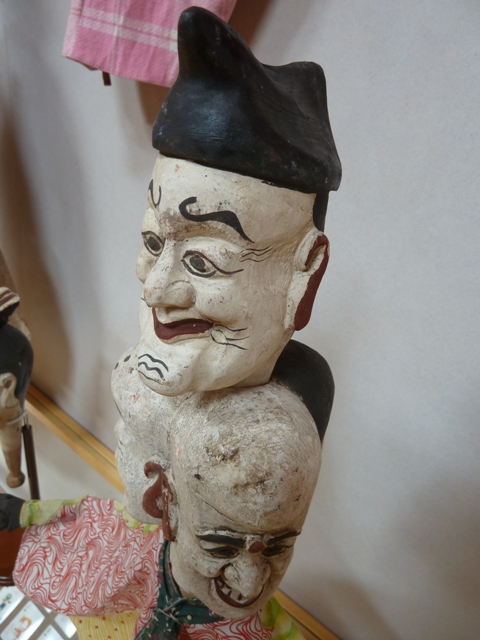
Four-faced head of a Chinese puppet. Taller Museo de Pola de Siero, Joaquín Hernández
The only way to get beyond this reductionism is to acknowledge our twofold nature and dare to be multiple. Which is to say, one must learn to be a puppeteer. This is the route taken by Object Theatre: to save objects from the reductionism of a single meaning and use. But when we give life to an object and turn it into a character or into something foreign to its normal state, in reality we are projecting ourselves on to the object, we become twofold and add a new form to that we already had. We undertake an exercise in being multiple[ii], the first step to opening ourselves to the world.
In reality, the entire History of Art is a history of this two-foldedness, intrinsic to human nature. We represented gods which we adored as images from the world that surrounded us: animals, rocks, mountains, thunder and human beings. Christianity, along with Greek philosophy, placed the human figure centre-stage, establishing it as the model and point of departure for the measurement of the universe. Thus were science and figurative art born.
Today it seems that the abstract, raised to supremacy by scientific and mathematical thought, wishes also to govern the most intimate human procedures. As if a monotheism of the Abstract, like fundamentalist iconoclasts, whether followers in the past of Luther or, more recently, of extremist Islamic sects, who prevented the re-creation of the divine in human form, wished to impose itself, anhilating humanity’s multifold capacity – and with it the interseccionist capacity for communication between sovereign individuals. A world of subjected people or, directly, a world of slaves in which one is only allowed, and obliged, to project oneself on what is given; stillborn abstraction, (if we understand “the living” as that which is born freely from one’s self), and thus incapable of establishing relationships of creative openness. Logically, this Abstract takes the archetypal form of Money and Interest, the only mechanisms with which, today, the majority of human beings function.
In this context, the responsibility of puppeteers is double: to go beyond preconceived abstractions and to put into practice the freedom to be twofold. For, just as there are many artists who produce dead art, we puppeteers should try not to make doubles out of carcass-like carictures whose only function is to propagate hollowness.
But even so, the projective and multifold function is inherent to the puppeteer’s profession; it is a pedagogy that causes any attempts to domesticate it to backfire. This is why there is such an interest at this moment in time in this art, situating it at the centre of contemporary thought anxious, as it is, for liberty. A responsibility which, as we said at the beginning, has caught us unawares and unarmed. From the platform of this magazine, we invite all those who wish to, and have the ability to do so, to bring forward new ideas and apply their tools to these questions which are so important and not always easy to perceive.
Translation, Rebecca Simpson
[i] “desdoblamiento” in the author’s original text.
[ii] On Object Theatre, see the articles by Mauricio Kartun and Shaday Larios published in Titeresante and Puppetring, which give valuable clues on the question of how to give life to objects and transform them into something other than themselves.

